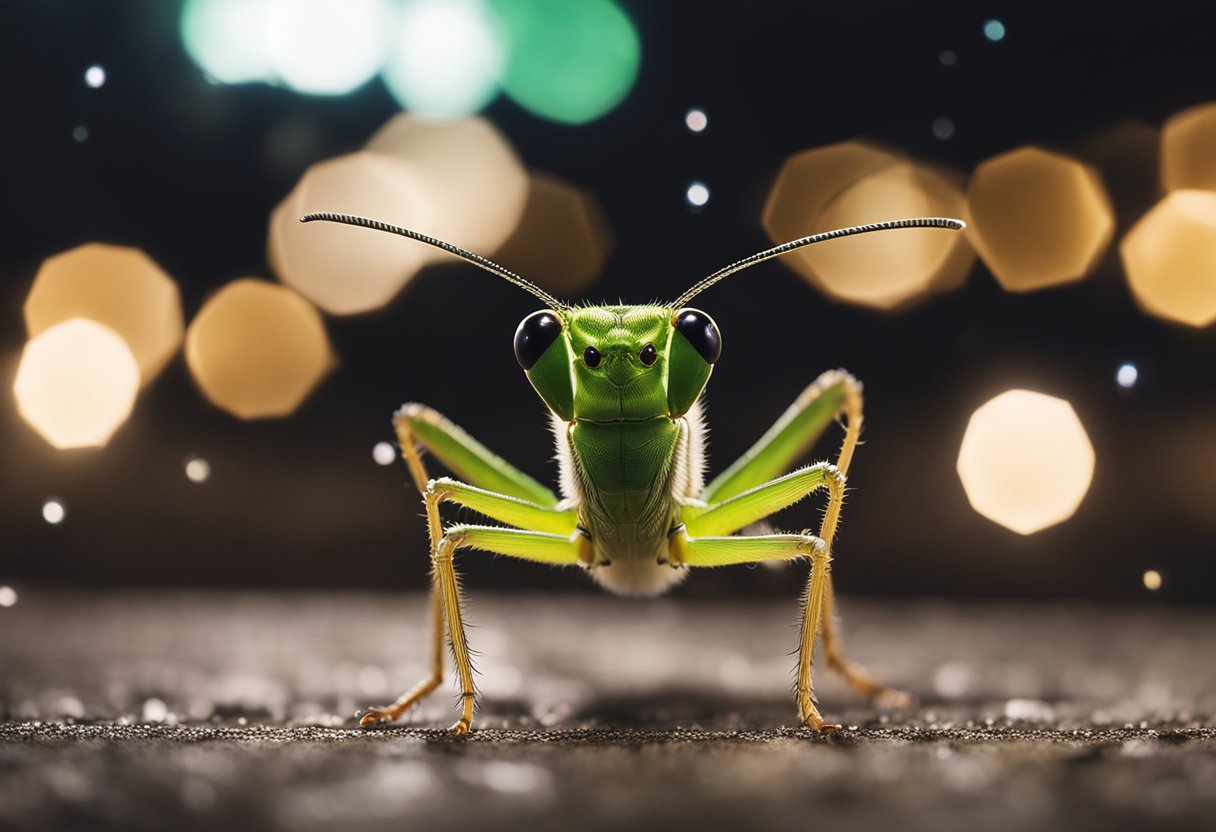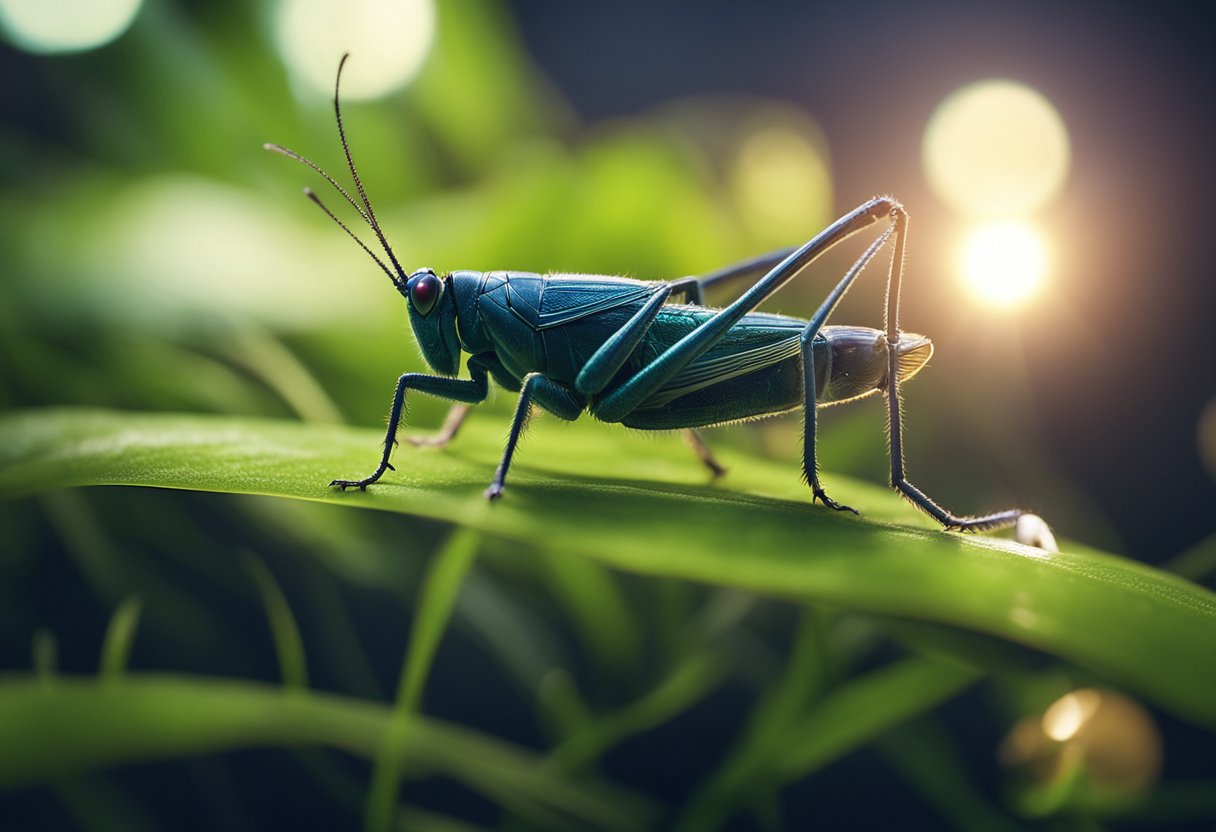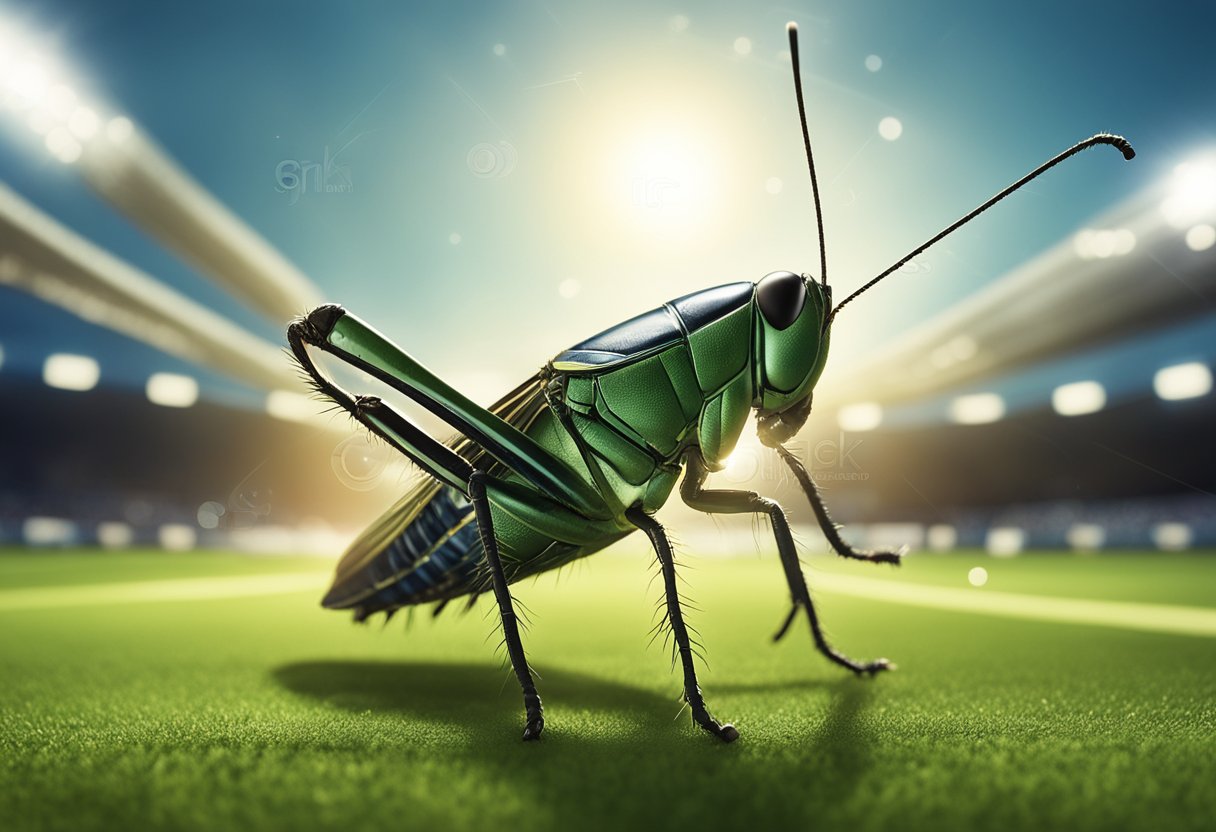Cricket behavior has long intrigued scientists and laypeople alike, particularly their attraction to light. These nocturnal insects are commonly observed hovering around street lamps and porch lights as darkness falls. This action roots itself in an innate biological drive, with light sources providing key environmental cues for crickets, affecting their movement and activity patterns.

The reason crickets are drawn to artificial light sources stems from a phenomenon known as phototaxis, where organisms move towards or away from light. Positive phototaxis is observed in crickets, compelling them to orient themselves towards the light. This fixation on bright lights at night can be linked to multiple behavioral and survival strategies, including foraging, predator avoidance, and even social interactions.
Environmental factors also play a role in the intrigue crickets find in illuminated spaces. They naturally favor dark, moist, and warm conditions for their habitat, yet they emerge into the light under certain conditions. For instance, light can signal potential sources of food, mating opportunities, or new territories to explore. Thus, understanding these creatures’ pull to light illuminates significant aspects of their biology and the interplay with their environment.
Cricket Biology and Behavior
Within the study of cricket biology and behavior, particularly pertinent areas include their lifecycle, communicative chirps, and the choice of habitat which is pivotal for their survival.
Cricket Lifecycle and Reproduction
Crickets go through a basic yet distinct lifecycle that involves multiple stages: the egg, nymph, and adult. The house cricket (Acheta domesticus), for instance, lays eggs in soil or crevices in a warm environment. The field cricket generally lays eggs in the fall, and these hatch in the spring.
Lifecycle Stages:
- Egg: Laid in protected sites; incubation is temperature-dependent.
- Nymph: Resembles adults but is wingless; undergoes several molts.
- Adult: Fully developed wings; capable of reproduction and chirping.
The Role of Chirping in Cricket Communication
Male crickets are renowned for their chirping behavior, which serves two primary functions: attracting females and deterring rival males. The sound, known as stridulation, is produced when they rub their wings together—specifically the scraper on one wing against the file on the other.
Functions of Chirping:
- Mating Call: Also known as the love song, lures potential mates.
- Territorial Claim: Asserts presence to other males.
Habitats and Shelter Preferences
Crickets exhibit distinct preferences for their habitats and shelters, seeking conditions that provide moisture, warmth, and safety.
Preferred Habitats:
- House Crickets: Warm locations, indoors during cooler months.
- Field Crickets: Outdoors in areas like tall grass, beneath rocks or logs.
- Camel and Cave Crickets: Prefer damp environments such as caves or basements.
In summary, crickets utilize various shelters, from tall grass and bushes to piles of leaves or human dwellings to thrive. Moisture is a common necessity across different cricket species due to its role in their biological processes.
Attractants and Light Behaviors
Crickets exhibit a behavior known as phototaxis, which significantly influences their attraction to various sources of light. Understanding this behavior and the effects of different outdoor lighting can help in mitigating unwanted cricket gatherings in human-inhabited areas.
Phototaxis in Crickets
Phototaxis refers to an organism’s movement in response to light. Crickets, being mainly nocturnal, use natural light such as moonlight for navigational purposes. They exhibit a behavior known as positive phototaxis, where they are attracted to light. This behavior can lead crickets to congregate around areas with artificial lighting, mistaking these for natural light sources.
Effects of Outdoor Lighting
The type of outdoor lighting used has a significant impact on cricket behavior. Traditional incandescent and fluorescent porch lights are known to attract crickets and other nocturnal insects due to their warmth and illumination. To reduce outdoor lighting attraction, it is advisable to use yellow lights or LED lighting, which emits less of the ultraviolet light that crickets and other insects find appealing. Another strategy is to install motion-activated lights, which only turn on when needed, thereby reducing the time during which lights can attract insects. Altering outdoor lighting can minimize the presence of crickets in human-occupied environments by modifying the environmental factors that typically draw them in.
Cricket Interactions with the Ecosystem

Cricket ecology involves complex interactions within the environment, including their role as prey and their influence on human habitats.
Cricket Predation and Defense Mechanisms
Crickets serve as a crucial food source within the ecosystem, supporting a diverse array of predators. Their natural predators include a variety of animals such as birds, frogs, spiders, and reptiles. When threatened, crickets exhibit certain behavior and habits to evade capture, such as:
- Rapid jumping to elude attackers
- Camouflage within their environment to avoid detection
These defense mechanisms contribute to the balance within the ecosystem, as crickets must navigate the fine line between predator and prey.
The Impact of Crickets on Human Environments
Crickets can become pests in human environments when they seek entry points into structures, attracted by light and the promise of shelter. An infestation in human habitats can occur due to:
- Outdoor lighting: Crickets are attracted to bright lights, which can lead them towards homes.
- Shelter and Clutter: Accumulations of clutter provide hiding spots for crickets, enabling them to establish themselves within a human environment.
While their sounds are often associated with calm summer nights, excessive chirping within homes can be disruptive. Pest control methods range from sealing entry points to consulting professional pest control services, especially when dealing with significant infestations. These measures are vital as crickets can affect the quality of life and hygiene in human habitats.
Prevention and Control Strategies

Effective cricket management hinges on a combination of environmental tactics and physical exclusion methods to address the root of the attraction and prevent entry into the home.
Environmental Adjustments and Cricket Repellents
Reducing Outdoor Lighting: Crickets are attracted to light, so one should reduce outdoor lighting wherever possible. This can involve:
- Switching off unnecessary lights after dark.
- Using low-wattage, yellow bulbs that are less appealing to crickets.
Moisture Control: Managing moisture levels deters cricket habitation by:
- Fixing leaky pipes and faucets.
- Using dehumidifiers in damp areas of the home.
Habitat Modification: Limiting cricket-friendly environments is crucial and includes:
- Removing clutter where crickets can hide.
- Clearing leaf piles and trimming overgrown vegetation near the home.
Natural and Chemical Repellents:
- Natural Repellents: Options such as neem oil, lemon, and vinegar can repel crickets without the use of insecticides.
- Insecticides: When necessary, applications of diatomaceous earth or insecticides can target cricket infestations.
Barrier Methods and Physical Exclusion
Seal Entry Points: It’s important to prevent cricket ingress by:
- Installing weatherstripping around doors and windows.
- Placing door sweeps to seal gaps beneath doors.
Window Screens and Coverings: Strengthening these barriers includes:
- Repairing or replacing damaged window screens.
- Using window coverings to block light and discourage crickets.
Use of Sticky Traps: Strategic placement of sticky traps can capture crickets before they spread, particularly in:
- Basements.
- Garages.
- Near potential entry points.
By implementing these preventive measures and maintaining physical barriers, homeowners can effectively control cricket presence and reduce the likelihood of infestation.

